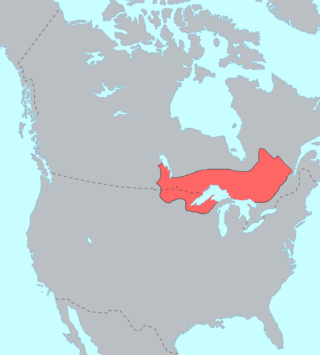Ojibwe
group of indigenous peoples in North America From Wikipedia, the free encyclopedia
The Ojibwe, Ojibwa, Chippewa, or Saulteaux are an Anishinaabe people of Canada and the United States. They are one of the biggest indigenous peoples north of the Rio Grande. In Canada, they are the second-biggest First Nations group. The only group bigger are the Cree. In the United States, they have the fifth-biggest number of people among Native American peoples. The only groups bigger are the Navajo, Cherokee, Choctaw and Sioux.
 Pre-contact distribution of Ojibwe-speaking people | |
| Total population | |
|---|---|
| 170,742 in United States (2010)[1] | |
| Regions with significant populations | |
| Canada (Quebec, Ontario, Manitoba, Saskatchewan, Alberta) United States (Michigan, Wisconsin, Minnesota, North Dakota) | |
| Languages | |
| English, Ojibwe, French | |
| Religion | |
| Midewiwin, Catholicism, Methodism | |
| Related ethnic groups | |
| Odawa, Potawatomi, Saulteaux, Oji-Cree, and other Algonquian peoples |
Most of the Ojibwe people live in the United States. There are 77,940 mainline Ojibwe; 76,760 Saulteaux; and 8,770 Mississauga, organized in 125 bands. They live from western Quebec to eastern British Columbia. As of 2010[update], the US census says that there are 170,742 Ojibwe people.[1]
References
Other websites
Wikiwand - on
Seamless Wikipedia browsing. On steroids.
